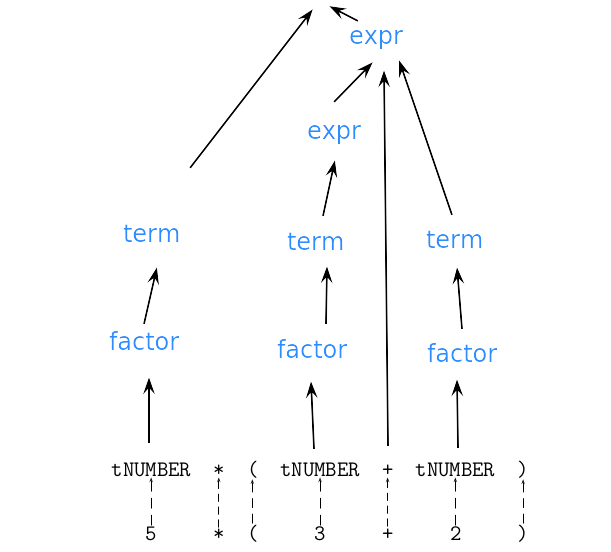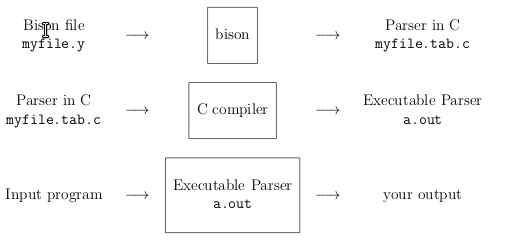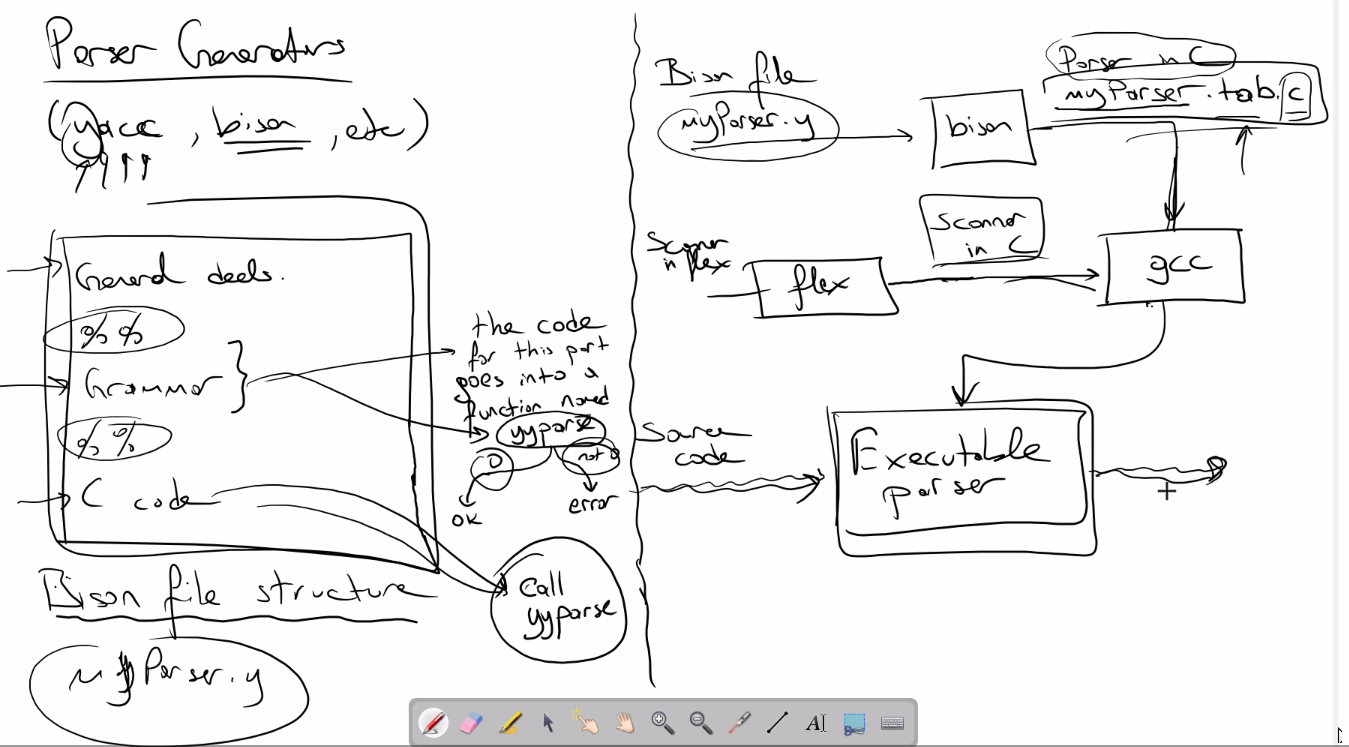EBNF & Syntax Graphs
2020-07-23 |EBNF
EBNF is used to make a formal description of a formal language such as a computer programming language. They are extensions of the basic Backus–Naur form (BNF) metasyntax notation. [wiki]
Optional Example
<func_decl> -> tDEF tID tLPAR [<id_list>] tRPAR
|___optional
<if_stmnt> ->
[]denotes in EBNF for optional parts in our productions.
List Example
Multiple identifier in id_list
<id_list> -> tID
| tID, <id_list>
```xmlExample:
* `{}` denoted in EBNF which used for list tyoes
### OR Expression
```xml
<for_stat> -> for tID := <expr> to <epxr>
| tID := <expr> down <epxr>
<for_stat> -> for tID := <expr> (to|down) <epxr>
Complete Example
Example: Turn this BNF notation to EBNF notation.
<expr> -> <expr> + <term>
| <expr> - <term>
| <term>
<term> -> <term> * <factor>
| <term> / <factor>
| <factor>
To achieve this first we need to derive expr notation. So we need to make observation from derivation.
<expr> =>* <term> + or - <term> ...
|__ derivation
<term> =>* <factor> * or / <factor> ...
Result is:
<expr> -> <term> {(+|-) <term>}
<term> -> <factor> {(*|/) <factor>}
Syntax Graphs
- We need a graph for each non-terminals
- Rectangle ==> terminal/token
- Ellipse ==> non-terminals
<if_stat> -> if <bool> then <stats> {<elseif>} [else<stats>]
<elseif> -> elseif <bool> then <stats>
In this example we will examine <if_stat> and <elseif>
IF

Elseif

Parsing
- Scanner = generate tokens
- Parser = check if the program is correct with token sequence
- Parse trees can be constructed with: bottom-up or top-dwon
int x; ==> tINT tID tSEMI; // We don't know if its correct
Bottom-up Parsing

Now we will start to implement our parser.

Parser Generators
(yacc, bison,etc):
- yacc = yet another compiler compiler
- in this course we will use bison.
sudo apt-get install bison


Postfix Language Example
Let's write a parser for postfix.
1
1 2 +
1 2 + 3 *
- 1 Non-Terminal
- 3 Token
Bison File
postfix.y
- Now we need to write our non-terminal in this notation.
- We need to say yo bison tNUM, tADD is a token.
%token tNUM tADD tMULT
%%
postfix : tNUM
| postfix postfix tADD
| postfix postfix tMULT
;
%%
Also we need to create a flex file to scan our program.
%%
[0-9]+ return tNUM; // ==> these are numbers
\+ return tADD;
\* return tMULT;
%%
// We don't need to write anything in here.
When we call %token in bison it will generate a unique number for each tokens. So we can return these numbers from tokens.
%token tNUM tADD tMULT
We need to add this file to get assignment for each token.
%{
#include "postfix.tab.h"
}%
%left '+' ==> + is left associative operator
%left '*' ==> * is left associative operator
'+' has higher priority than '*' because it's on the top. if we want to say they're in the same priority level we can indicate like that:
%left '+','*'
Relative priority
Attribute Grammers
Attribute grammers ==> based on context free grammer
- State additional grammers for context free grammers
- Attribute Grammer = CFG + attributes (piece of informations) + semantics actions (actions of functions, how the values are produced) + predicates (boolean value functions)
- Detect variable not declared yet
- Example
func A
endfunc A
Attributes
- Synthesized: Synthesized attributes of a symbol depend on the attributes of its children.
- Inherited: Depends on the attributes of its parent and its siblings.
We will try to describe this rule but context free grammer is not enough.
Static Semantics
- Related to syntax of program
- Described by CFG
Dynamic Statics
- Run-time
- Described by natural language
CFG example:
<exp> -> <num> + <num>
<num> -> tNUM
 This was the end of the blog post. You can reach me via email umusasadik at gmail com
This was the end of the blog post. You can reach me via email umusasadik at gmail com